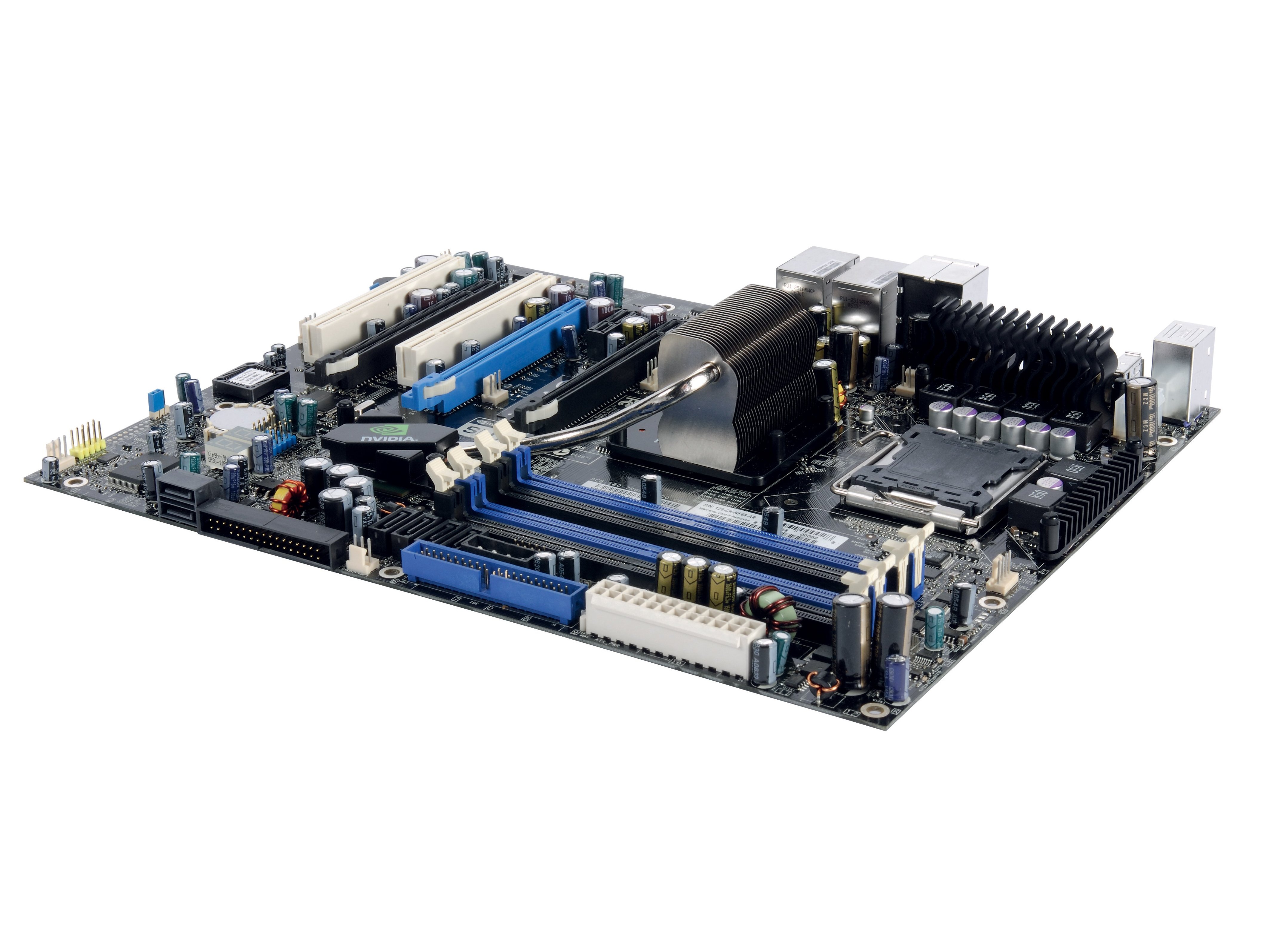TechRadar Verdict
For ease of use, bonus features and stability when overclocked, it's the best in class
Pros
- +
Excellent Box and Extras
Loads of Features
Insanely Overclockable
Cons
- -
Very, Very Expensive
Why you can trust TechRadar
Today we'll be reviewing motherboards according to playground rules. In case you're unsure, this means that bigger is better, more is always more, and there's no such thing as over the top. You may ask why we're resorting to such unsophisticated terms for our evaluations, and the answer is because that's clearly the thought process behind the design here. We're applying the hermeneutical approach to hardware reviews.
NVIDIA's latest NFORCE motherboard leaves nothing out. In the same way the NFORCE 2 was all things to all people, 680i's specs list is uncompromising, taking for granted that its potential buyer doesn't just want the best, they demand it. It's more than a return to form for NVIDIA's mobo division after a couple of years where the major features were support for SLI and some nifty networking.
With the 680i, though, no aspect has been overlooked. The Southbridge - in NVIDIA-speak the MCP - has a HD audio decoder, six SATA ports, ten USB sockets and a bonus 16-lane PCI-Express slot. This gives a total of three such sockets, two for SLI'd graphics, and one for a spare graphics board to drive an extra monitor or - at a later date - provide things like physics calculations.
Most importantly, it brings NVIDIA's still unique bag of networking tricks: two gigabit ethernet controllers, which can double up to provide a massive two gigs of bandwidth in one connection. On top of that, the 680 still boasts FirstPacket, a hardware-based method of prioritising network traffic such as games, video and voice chat; you know, the important stuff.
Board bully
So far, so good. But this is playground rules, remember, and it's not enough for Jen-Sun's boys to have more stuff than the other children, they've got to have the best too. And that's where some canny technology in the Northbridge comes in.
Everything has been manufactured for plenty of overclocking headroom, so while the boards are specced for a standard 1,066MHz front side bus and 800MHz DDR2 RAM, they'll support 1,333MHz and far beyond. The BIOS gives you access to pretty much every clockspeed and volt controller you could wish for, and a massive heatsink with optional fan braces the board for a thorough beating.
Which is all well and good on paper, but when it was pulled up in front of the headmaster at PCF High, what did the new kid in 5C have to say for itself, terrorising the other children with its high FSBs and big heatsinks?
Sign up for breaking news, reviews, opinion, top tech deals, and more.
First off, we do like the way the board is turned out. There are some unusual placements for the molex connectors and front panel controls, which makes things a bit crowded up in the top right corner, but it does mean there's plenty of room for graphics boards and airflow elsewhere. The optional fan on the Northbridge is definitely not top of the class: its tiny, ill-fitting screws are insanely hard to work with, and the fan itself is a good deal noisier than we'd consider strictly necessary.
The automatic overclocking controls thoroughly redeem the 680i, though, and make it almost suitable for milk monitor. While there's an incredible amount of control in the BIOS, these are about delivering power into the hands of gamers, not simply satisfying the tweak freaks of this world.
One click on the basic 20-minute system assessment got the rig running some 10 percent faster - and rock-solid stable. Too much automation can be a bad thing, mind you, and it should be noted that several times the options we'd chosen in the Windows control panel were reset without warning or just not applied at all - no doubt a driver bug.
The moral of the story? Beware how much you allow to be taken out of your hands - test your rig with the automatic setup, but then go into the BIOS and manually enter the same settings, because there's an enormous amount of headroom in this board.
We had our Core 2 Duo 6700 running without complaint at a whopping 3.4GHz, without even touching the voltage controls. That's almost 30 percent extra speed for free, resulting in anywhere from 5- 25 percent extra real world performance - which is not to be sniffed at, we're sure you'll agree.
Compared to its nearest competitor, the Intel 975X, there's not an awful lot to justify the higher price tag at stock speeds. While the 680i is marginally faster in some tests, it's slower in others - notably our Steam multicore map drawing test - so it makes little difference to out-of-the-box performance. But for ease of use, bonus features and stability when overclocked, the 680i isn't merely a playground tyrant, it's also best in class.
Tech.co.uk was the former name of TechRadar.com. Its staff were at the forefront of the digital publishing revolution, and spearheaded the move to bring consumer technology journalism to its natural home – online. Many of the current TechRadar staff started life a Tech.co.uk staff writer, covering everything from the emerging smartphone market to the evolving market of personal computers. Think of it as the building blocks of the TechRadar you love today.
